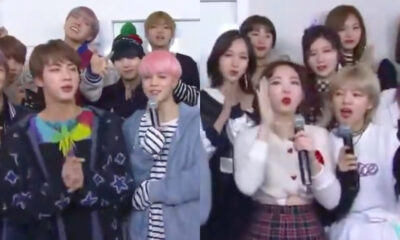Science
University of Utah Researcher Combines Dance and Science for Better Communication

The University of Utah is highlighting the innovative work of researcher Cheenu Raghuraman, who merges the worlds of dance and science to enhance communication in neurology research. Raghuraman focuses on the neurological aspects of fish, particularly examining how the venom of the cone snail impacts their proprioception, or their ability to perceive their position in space.
In an interview with “Humans of the U,” Raghuraman explained the significance of proprioception using a relatable analogy. He illustrated the concept by asking, “If you close your eyes and put your fingers together above your head, you know exactly where the tips of your fingers are, right?” He emphasized that this innate awareness is crucial for understanding how organisms interact with their environment.
Through the lens of classical Indian dance, Raghuraman seeks to convey complex scientific ideas in a more accessible manner. The precision required in this dance form parallels the nuances of his research, allowing him to engage students and the public alike. He believes that simplifying scientific concepts without diluting their essence is vital for effective communication.
Raghuraman actively promotes science accessibility by taking students to local schools, where he conducts simple experiments. His mission is to “simplify—not dumb down—their work for different audiences,” as he noted in the interview. By removing jargon and complexity, he aims to present science in ways that resonate with diverse groups, making it more approachable and understandable.
Adaptation has played a significant role in Raghuraman’s journey. Originally from South India, he transitioned from Sastra Deemed University to the University of Utah, where he faced the challenges of both acclimating to a new culture and navigating the intricacies of marine biology. He recalls his first week in Utah, which included an unexpected encounter with a snowstorm, as a stark introduction to life in a different environment.
Raghuraman’s unique approach exemplifies the importance of interdisciplinary methods in research and education. By integrating dance and science, he not only elevates his own work but also inspires others to view scientific inquiry through a more creative lens. His efforts contribute to a broader conversation about the need for clear science communication, particularly in fields often considered complex or inaccessible.
As he continues his work, Raghuraman remains dedicated to engaging audiences and enhancing understanding of neurological research. His innovative strategies serve as a reminder that science can be communicated effectively through various forms of expression, making it more relatable and impactful for all.
-

 Science2 months ago
Science2 months agoUniversity of Hawaiʻi Joins $25.6M AI Project to Monitor Disasters
-

 Business2 months ago
Business2 months agoForeign Inflows into Japan Stocks Surge to ¥1.34 Trillion
-

 Top Stories2 months ago
Top Stories2 months agoBOYNEXTDOOR’s Jaehyun Faces Backlash Amid BTS-TWICE Controversy
-

 World2 months ago
World2 months agoBoeing’s Merger with McDonnell Douglas: A Strategic Move Explained
-

 Top Stories2 months ago
Top Stories2 months agoCarson Wentz Out for Season After Shoulder Surgery: Urgent Update
-

 Top Stories2 months ago
Top Stories2 months agoMarc Buoniconti’s Legacy: 40 Years Later, Lives Transformed
-

 Entertainment2 months ago
Entertainment2 months agoSydney Sweeney Embraces Body Positivity Amid Hollywood Challenges
-

 Lifestyle2 months ago
Lifestyle2 months agoKelsea Ballerini Launches ‘Burn the Baggage’ Candle with Ranger Station
-

 Health2 months ago
Health2 months agoInnovative Surgery Restores Confidence for Breast Cancer Patients
-

 Sports2 months ago
Sports2 months agoSteve Kerr Supports Jonathan Kuminga After Ejection in Preseason Game
-

 Entertainment2 months ago
Entertainment2 months agoZoe Saldana Advocates for James Cameron’s Avatar Documentary
-

 Science2 months ago
Science2 months agoChicago’s Viral ‘Rat Hole’ Likely Created by Squirrel, Study Reveals









